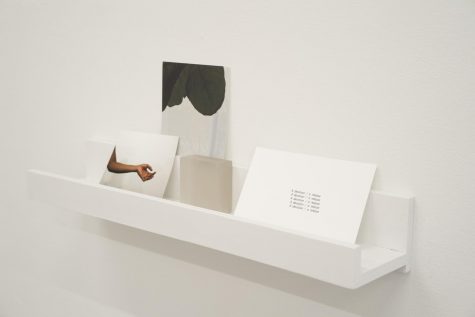Duvra mixes mediums to redefine racial concepts
MS/US Fine Arts teacher Mara Duvra explores different artistic mediums to convey her identity.
Whether she is teaching painting, drawing, or printmaking, Mara Duvra, the new Upper School art teacher, finds her rhythm in multiple mediums. However, in her own work, Duvra primarily works in photography.
“I like the fidelity of photography. That it’s very clear for me” Duvra said.
Although she aims to capture atmosphere and portraiture in her photos, she does not limit herself to them.
“It makes you more fluid and makes you able to think about what each thing can do for what you’re trying to say,” Duvra explained.
Duvra knows the benefit of being a multimedia artist. She will combine sculpture and photography with text, the art often coming together in the form of installation.
“An installation will surround a certain concept,” Duvra defined, “I’ll start thinking about that concept and how I could translate it visually and poetically.” Her inspiration will often come from her readings and research.

“I’m always photographing things and I’m always reading something,” Duvra said.
“I’m already thinking about how these things can be combined together.”
She focuses on how objects in a space balance off each other and their relationship to the viewer. She illustrates the scene of one of her installations,
“Stillness is an important part, quiet also,” Duvra said.
Duvra adds that she aims to make the viewer reorient their body in the space.
“I put things on the ground so that you’ll have to bend over and look at them or I put something up higher that you have to read, so have to sort of peer into it,” Duvra added. Duvra’s current project, titled “Tending,” highlights “softness and interiority of women of color.”
With this piece, she will give “space to create another new, poetic, image of what it is to be a person of color rather than what we typically see,” that counteracts what is often shown in the media.
She plans to highlight “the difference between the private and the public, the interior and what people anticipate that you feel about things.” Duvra explained. The piece will be an anthology of photos of women of color, but not as portraits but instead “a way to get at the softness of what it is to be a woman of color that you don’t really get to see.”
I like the fidelity of photography. That it’s very clear for me
Unlike her photographs, what Duvra most likes about art is its lack of fidelity. She spoke to what she likes best about her work,
“that it always changes, that it’s always evolving, that it’s always adding to itself, that there’s always more that can be done” Duvra explained. Duvra also adds she likes the research. As an artist, Duvra knows what is helpful for personal achievement.
“Just listening to what you’re interested in and focusing on that, making work, and talking to your peers, getting advice, being comfortable with failure and realizing that someone not liking something doesn’t necessarily mean it’s a failure.” While the mobility of her art and the constant work of research and photography may be continuous, these motions are not void of a feeling of accomplishment.
“I feel successful when I’ve been able to sort of visually translate all of the things that I’ve been reading, photographing, and researching. Translate in a way that produces curiosity in other people…when I’ve been able to get at all the nuances, all of sort of the small parts I’ve been thinking about and represent them visually.”
This story was originally published in the September issue of The Rubicon.
Lucy is the Editor-in-Chief on The Rubicon. This is her fourth year on staff. While following the stay-in-place order Lucy is listening to a lot of music,...